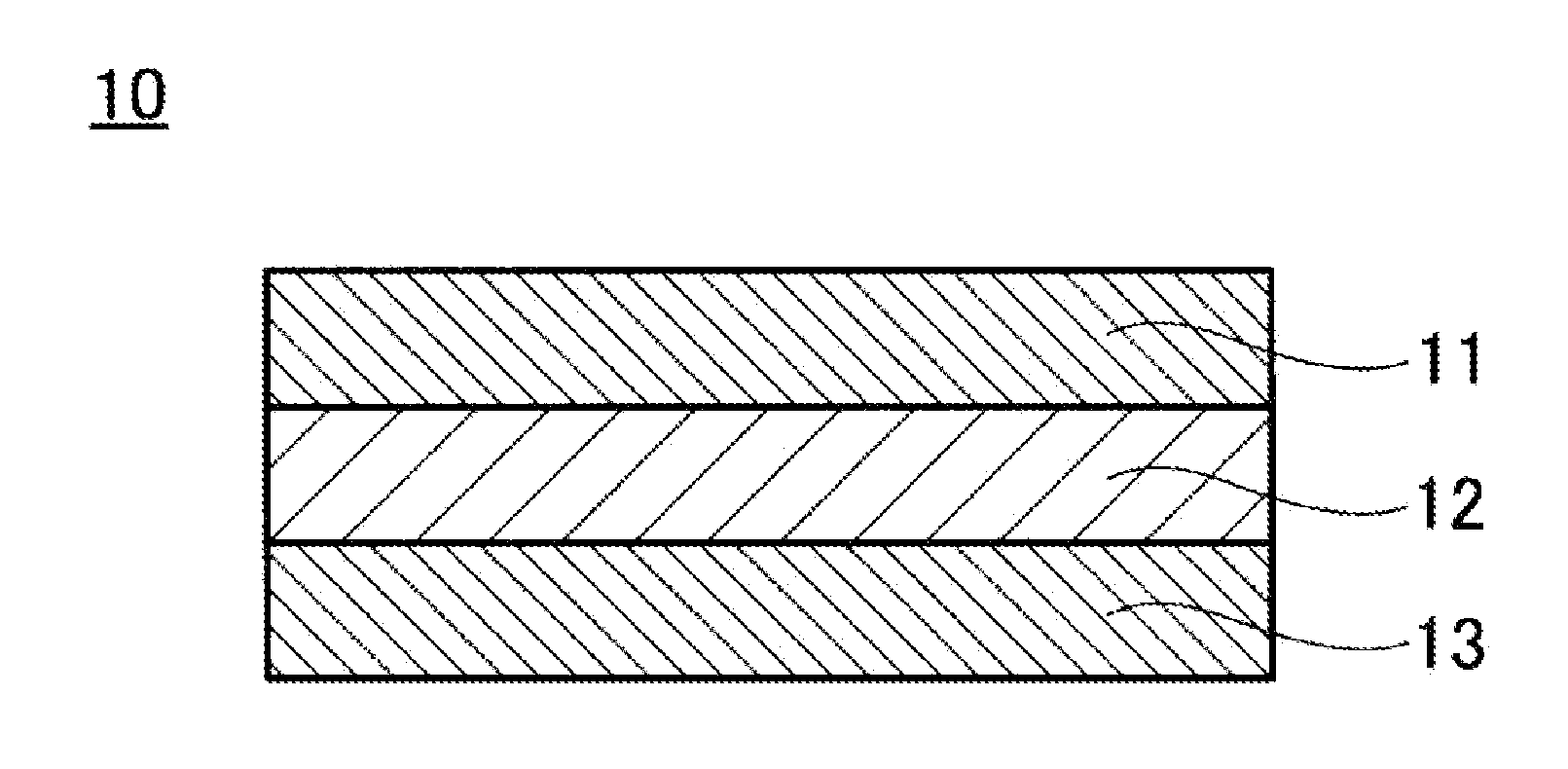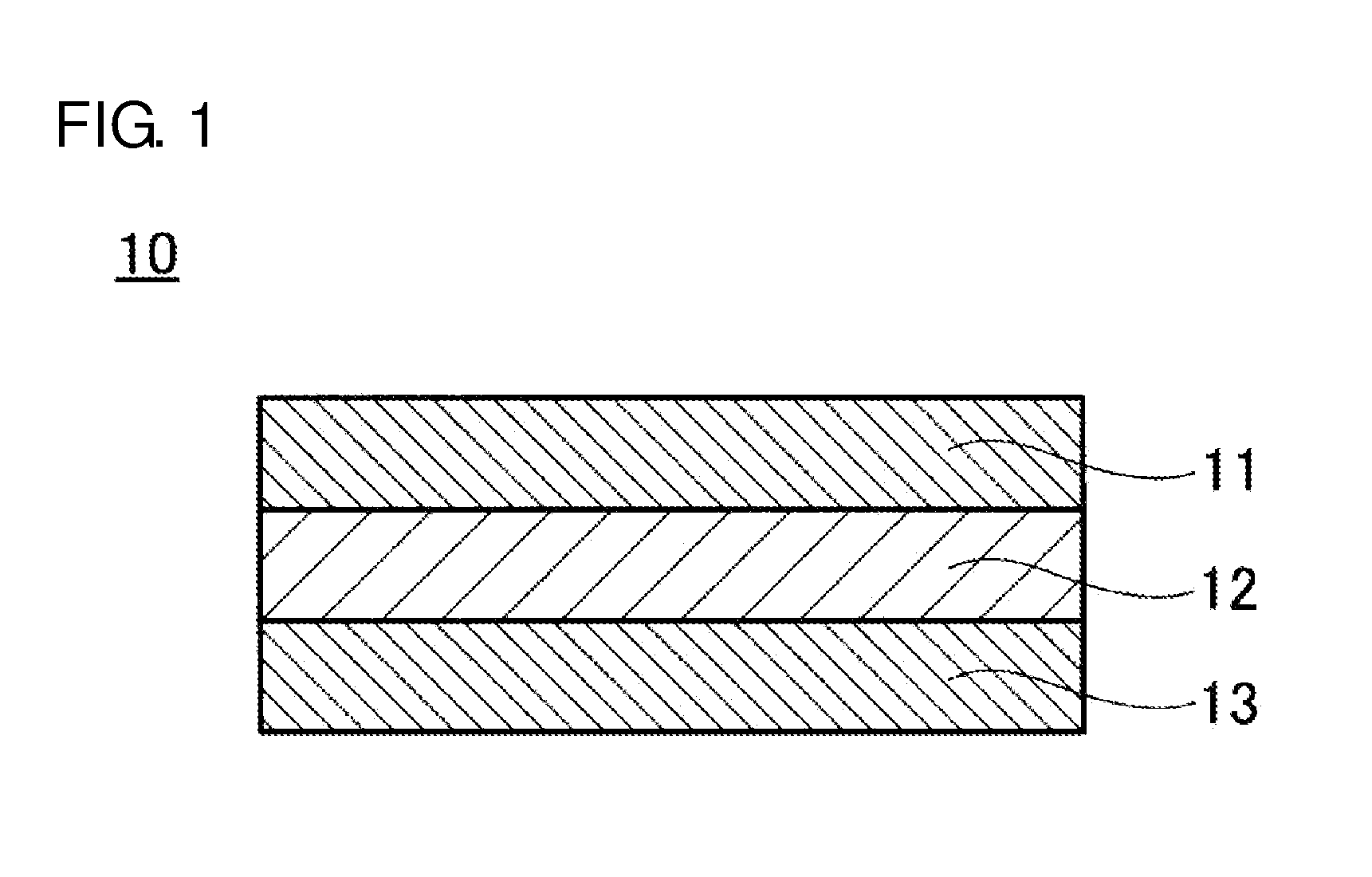All solid state battery
a solid-state battery, all-in-one technology, applied in the direction of non-aqueous electrolyte cells, cell components, sustainable manufacturing/processing, etc., can solve the problems of battery discharge capacity decline, discharge capacity decrease, lack of cycle stability, etc., to achieve the same discharge capacity level, improve cycle stability, and improve cycle stability
- Summary
- Abstract
- Description
- Claims
- Application Information
AI Technical Summary
Benefits of technology
Problems solved by technology
Method used
Image
Examples
example 1
Preparation of Electrode Layer Sheet and Solid Electrolyte Layer Sheet
[0043]First, in order to prepare an all solid state battery, an electrode layer sheet and a solid electrolyte layer sheet were prepared as follows.
[0044]First, an anatase-type titanium oxide (TiO2) powder was prepared as an electrode active material, whereas a glass powder of Li1.5Al0.5Ge1.5(PO4)3 (hereinafter, referred to as “LAGP”) for precipitating a crystalline phase of a lithium-containing phosphate compound with a NASICON-type structure was prepared as a solid electrolyte.
[0045]Next, the anatase-type titanium oxide powder was mixed with a binder solution to prepare an electrode active material slurry. In addition, the glass powder of LAGP and a binder solution were mixed to prepare a solid electrolyte slurry. Furthermore, a carbon powder and a binder solution were mixed to prepare a carbon slurry. It is to be noted that the binder solution was prepared by dissolving polyvinyl alcohol in an organic solvent.
[0...
example 2
[0061]In Example 2, brookite-type titanium oxide was used in place of anatase-type titanium oxide (TiO2) used as the electrode active material in Example 1. The other conditions for preparation were set in the same way as in Example 1 to prepare an all solid state battery.
[0062]
[0063]The obtained all solid state battery was charged and discharged with a constant current and a constant voltage, at a current density of 50 μA / cm2 in a voltage range of 1.0 to 3.0 V. As a result, it has been confirmed that it is possible to carry out charge and discharge with a discharge capacity of approximately 100 mAh / g, and the same level of capacity is provided as in the case of the battery using the electrolyte solution.
example 3
[0064]In Example 3, a molybdenum dioxide (MoO2) powder was used in place of the anatase-type titanium oxide (TiO2) powder used as the electrode active material in Example 1. The other conditions for preparation were set in the same way as in Example 1 to prepare an all solid state battery.
[0065]
[0066]The obtained all solid state battery was charged and discharged with a constant current and a constant voltage, at a current density of 50 μA / cm2 in a voltage range of 1.0 to 3.0 V. As a result, it has been confirmed that it is possible to carry out charge and discharge with a discharge capacity of approximately 200 mAh / g, and the same level of capacity is provided as in the case of the battery using the electrolyte solution.
[0067]In addition, the obtained all solid state battery was charged and discharged with a constant current and a constant voltage, at a current density of 50 μA / cm2 in a voltage range of 1.4 to 3.0 V. As a result, the discharge capacity in the first cycle was 200 mA...
PUM
 Login to View More
Login to View More Abstract
Description
Claims
Application Information
 Login to View More
Login to View More - R&D
- Intellectual Property
- Life Sciences
- Materials
- Tech Scout
- Unparalleled Data Quality
- Higher Quality Content
- 60% Fewer Hallucinations
Browse by: Latest US Patents, China's latest patents, Technical Efficacy Thesaurus, Application Domain, Technology Topic, Popular Technical Reports.
© 2025 PatSnap. All rights reserved.Legal|Privacy policy|Modern Slavery Act Transparency Statement|Sitemap|About US| Contact US: help@patsnap.com


